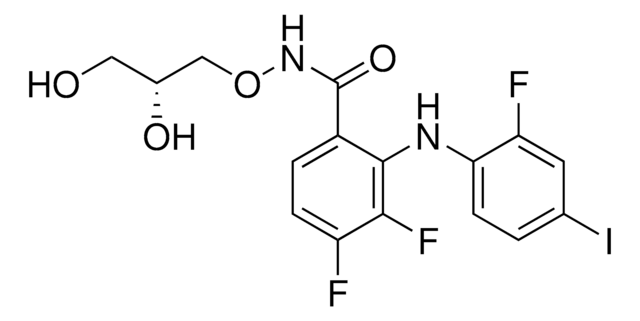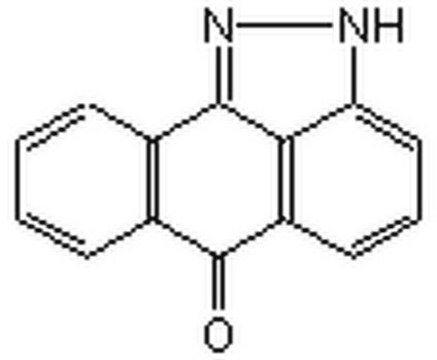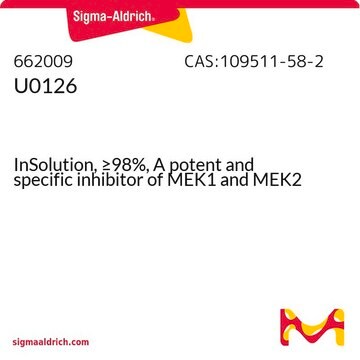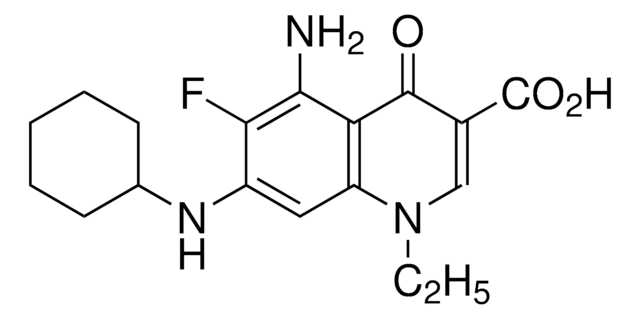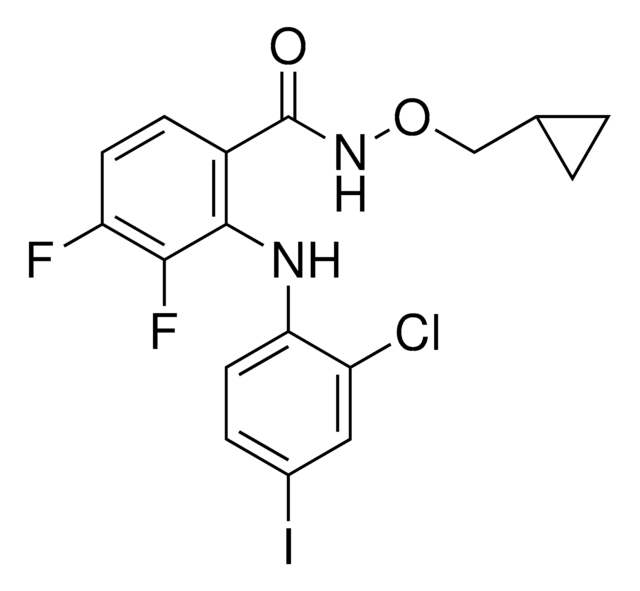444966
MEK1/2 Inhibitor III
The MEK1/2 Inhibitor III, also referenced under CAS 391210-10-9, controls the biological activity of MEK1/2. This small molecule/inhibitor is primarily used for Phosphorylation & Dephosphorylation applications.
동의어(들):
MEK1/2 Inhibitor III, PD325901, PD0325901, N-((2R)-2,3-Dihyroxypropoxy)-3,4-difluoro-2-((2-fluoro-4-iodophenyl)amino)-benzamide, PD 0325901, MEK Inhibitor III
About This Item
추천 제품
Quality Level
분석
≥95% (HPLC)
형태
solid
제조업체/상표
Calbiochem®
저장 조건
OK to freeze
protect from light
색상
white to off-white
solubility
DMSO: 20 mg/mL
배송 상태
ambient
저장 온도
2-8°C
InChI
1S/C16H14F3IN2O4/c17-11-3-2-10(16(25)22-26-7-9(24)6-23)15(14(11)19)21-13-4-1-8(20)5-12(13)18/h1-5,9,21,23-24H,6-7H2,(H,22,25)/t9-/m1/s1
InChI key
SUDAHWBOROXANE-SECBINFHSA-N
일반 설명
포장
경고
재구성
기타 정보
Leyton, J., et al. 2008. Mol. Cancer Ther.7, 3112.
Silva, J., et al. 2008. PLoS Biol.6, 2237.
Ying, Q.L., et al. 2008. Nature453, 519.
Bain, J., et al. 2007. Biochem. J.408, 297.
Solit, D.B., et al. 2006. Nature439, 358.
법적 정보
신호어
Danger
유해 및 위험 성명서
Hazard Classifications
Acute Tox. 3 Oral - Aquatic Chronic 4 - STOT RE 2
Storage Class Code
6.1C - Combustible acute toxic Cat.3 / toxic compounds or compounds which causing chronic effects
WGK
WGK 3
Flash Point (°F)
Not applicable
Flash Point (°C)
Not applicable
시험 성적서(COA)
제품의 로트/배치 번호를 입력하여 시험 성적서(COA)을 검색하십시오. 로트 및 배치 번호는 제품 라벨에 있는 ‘로트’ 또는 ‘배치’라는 용어 뒤에서 찾을 수 있습니다.
자사의 과학자팀은 생명 과학, 재료 과학, 화학 합성, 크로마토그래피, 분석 및 기타 많은 영역을 포함한 모든 과학 분야에 경험이 있습니다..
고객지원팀으로 연락바랍니다.